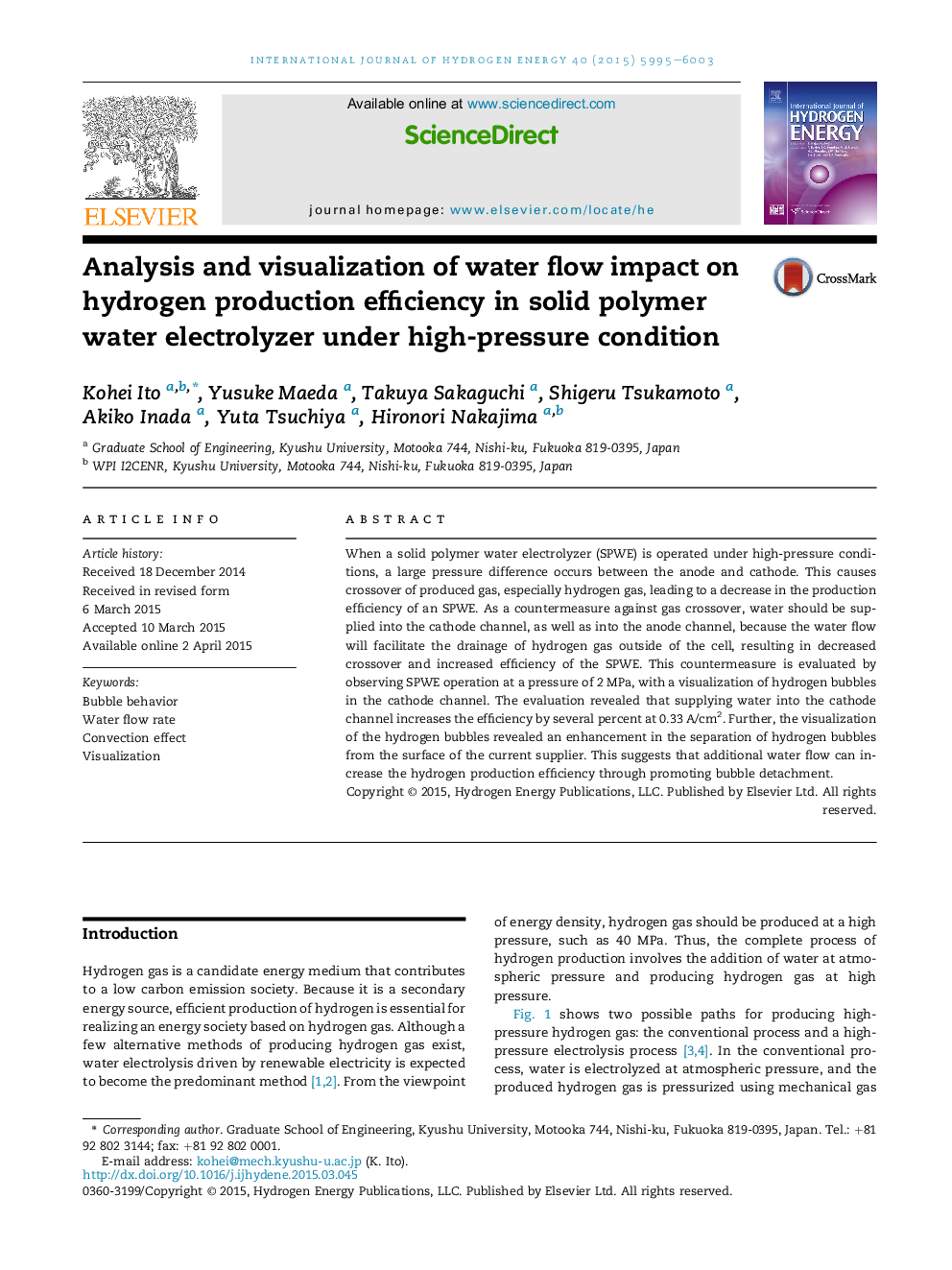| Article ID | Journal | Published Year | Pages | File Type |
|---|---|---|---|---|
| 7715559 | International Journal of Hydrogen Energy | 2015 | 9 Pages |
Abstract
When a solid polymer water electrolyzer (SPWE) is operated under high-pressure conditions, a large pressure difference occurs between the anode and cathode. This causes crossover of produced gas, especially hydrogen gas, leading to a decrease in the production efficiency of an SPWE. As a countermeasure against gas crossover, water should be supplied into the cathode channel, as well as into the anode channel, because the water flow will facilitate the drainage of hydrogen gas outside of the cell, resulting in decreased crossover and increased efficiency of the SPWE. This countermeasure is evaluated by observing SPWE operation at a pressure of 2Â MPa, with a visualization of hydrogen bubbles in the cathode channel. The evaluation revealed that supplying water into the cathode channel increases the efficiency by several percent at 0.33Â A/cm2. Further, the visualization of the hydrogen bubbles revealed an enhancement in the separation of hydrogen bubbles from the surface of the current supplier. This suggests that additional water flow can increase the hydrogen production efficiency through promoting bubble detachment.
Keywords
Related Topics
Physical Sciences and Engineering
Chemistry
Electrochemistry
Authors
Kohei Ito, Yusuke Maeda, Takuya Sakaguchi, Shigeru Tsukamoto, Akiko Inada, Yuta Tsuchiya, Hironori Nakajima,
